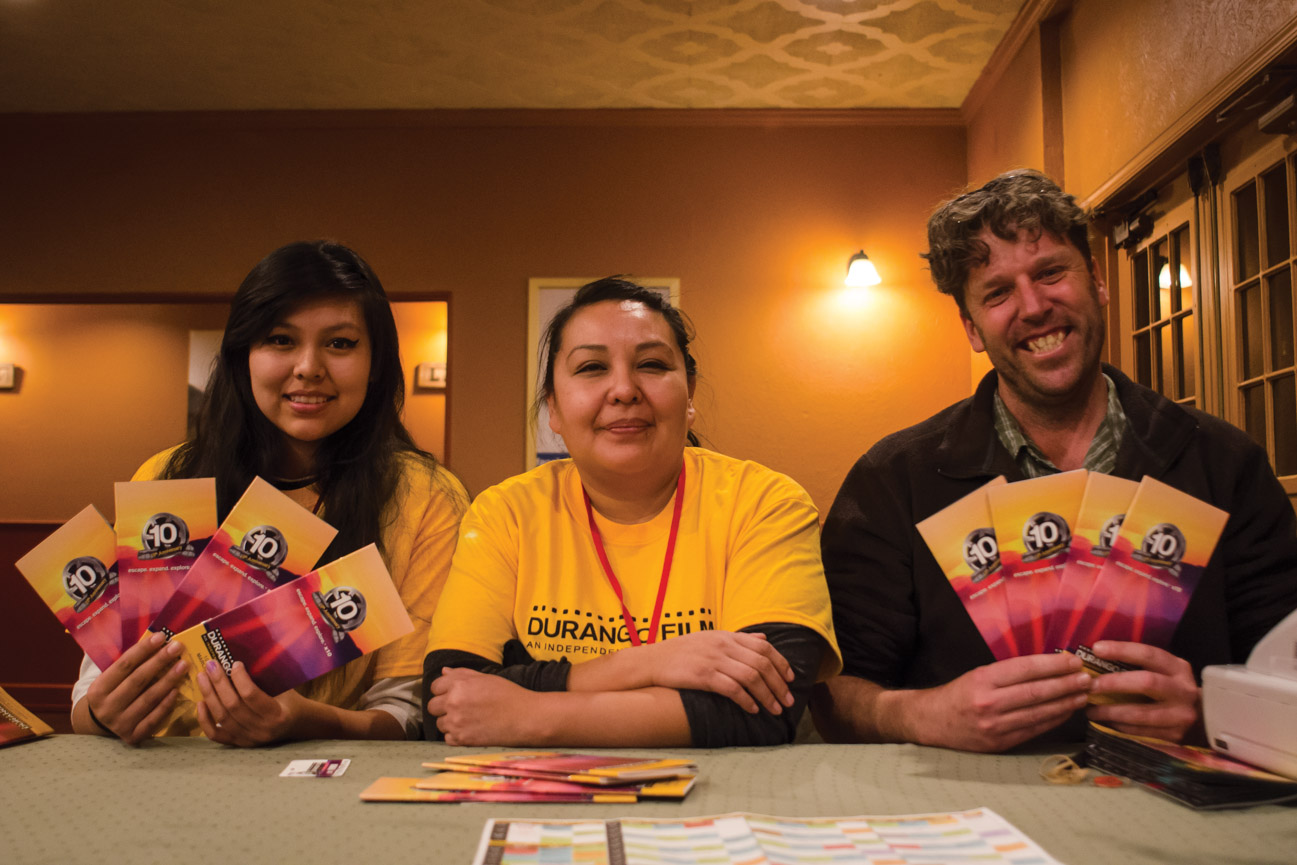Another year is in the bag for the Durango Independent Film Festival, which returned to La Plata County for its tenth straight year. The festival took place from March 4 through March 8, and featured films from all over the world, ranging in genres of comedy, science fiction, documentary, and drama. The festival is held in honor of independent filmmaking, recognizing productions that utilize the use of smaller and downscaled budgets compared to larger Hollywood films. A number of actors and artists made an appearance, including Smoke Signals director, Chris Eyre, and actor, Gary Farmer.
Among the list of programs, the Native American Film Program returned for its fifth year, showcasing a number of films that tell stories involving native themes, including spirituality and self-discovery. The program was met with positive reviews from audiences and wants to use the inspiration to grab the attention of native artists in regards of considering filmmaking as a visionary outlet.
“We have had many crowd pleasers that people have been talking about,” said Crystal Delgai, director of the Native American Film Program. “Each of the native films has an importance. There are films that the communities need to see, and there are films that open up people’s eyes to another way of life.”
The native program allowed storytellers to share their tales of pride, responsibility, and adventures. “Daughters of Emmonak” is a 2013 film directed by Samantha Andre, and tells the inspiring of Lynn, a caring woman who opened the Emmonak Women’s Shelter in 1982 with the intent of providing a safe place for women and children from the surrounding villages. The film was met with acclaim and won the audience award along with “Indian Relay”, a documentary film by Charles Dye that follows several teams from three different American Indian communities as they prepare for and compete across a grueling Indian Relay season.
“These people are remarkable and are working so hard to pass on the generation,” said director George Giglio as he commented on his film, “Listening for a New Day.” The film was recently screened at Ignacio Middle School prior to the festival showing. It tells the story of the Arapaho Tribes in Wyoming coming together to build a buffalo hide tipi after learning of only five known to exist still intact.
“The native program is amazing because every movie is so good,” commented Chris Eyre, director of Smoke Signals. “These stories are real and are about real people.”
He attended the festival with Paula Amanda from the Santa Fe University of Art and Design along with sophomore students Alec Brown, Zach Tiongson, Lia Gotz, Omar Hilario, and Alejandra Castro. The students were also presenting a film of their own, each coming from its own inspiration.
“The native culture is traditionally storytelling,” Paula Amanda said. “They’re embracing the technology to tell these stories, and it reminds you that it’s always a traditional element in their culture.”
The Native American Film Program is already looking forward to it’s next year and is encouraging the inspiring native artists to get behind a camera and see a new vision in storytelling.
“It’s great to support these artists and encourage others in the creativity of these projects,” said Crystal Delgai. “Our program breaks the barriers of conversation. People might not understand a native film, and that can lead to some opinionated discussions. But history is shared … and as natives, we have the heritage to understand the themes because we see our mother’s, fathers, and elders as heroes, and we understand that.”




